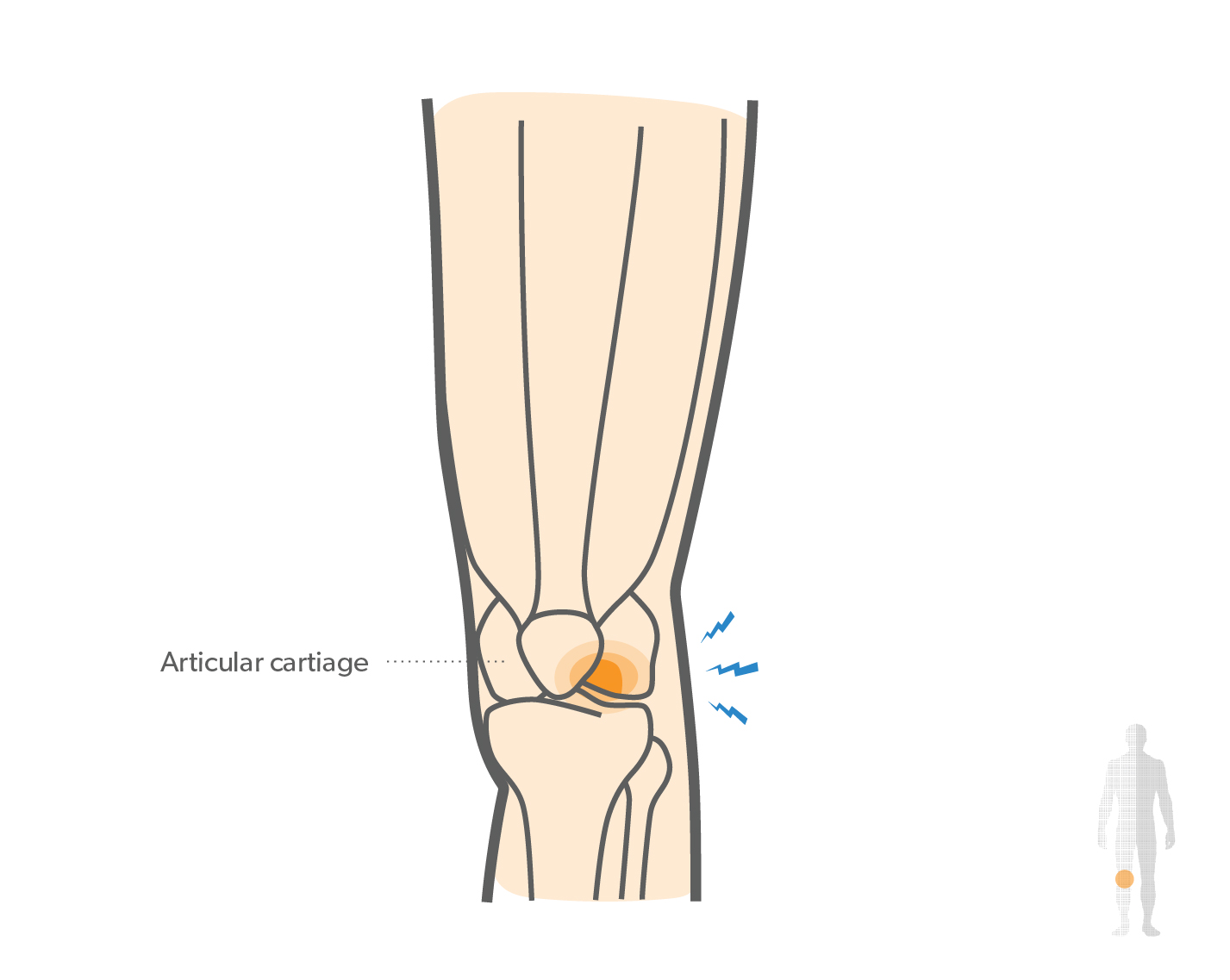Osteochondritis dissecans (OCD) is a joint condition that causes knee pain and limited ability to extend and bend the knee. While the exact cause is unknown, the condition may occur due to a loss of blood flow to the area underneath the cartilage in the knee, causing part of the bone to die. Usually seen in children and adolescents active in sports, the condition results in fragments of bone loosening and sometimes detaching from the bone.
Osteochondritis dissecans has four different stages of severity:
• Stage I: The cartilage begins to thicken, but both the cartilage and bone are considered stable.
• Stage II: The cartilage begins to crack, but it is still considered stable.
• Stage III: The cartilage has cracked completely and the underlying bone has begun to crack. When this happens, the structure is considered unstable.
• Stage IV: The cartilage and/or bone has detached from its original position. It is considered unstable.


